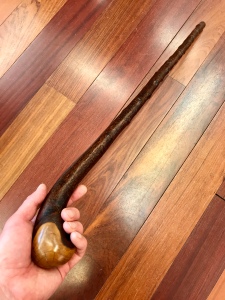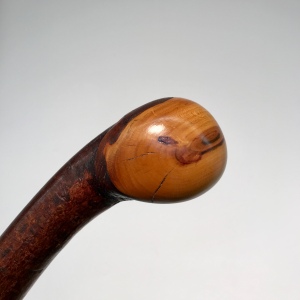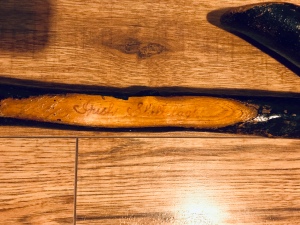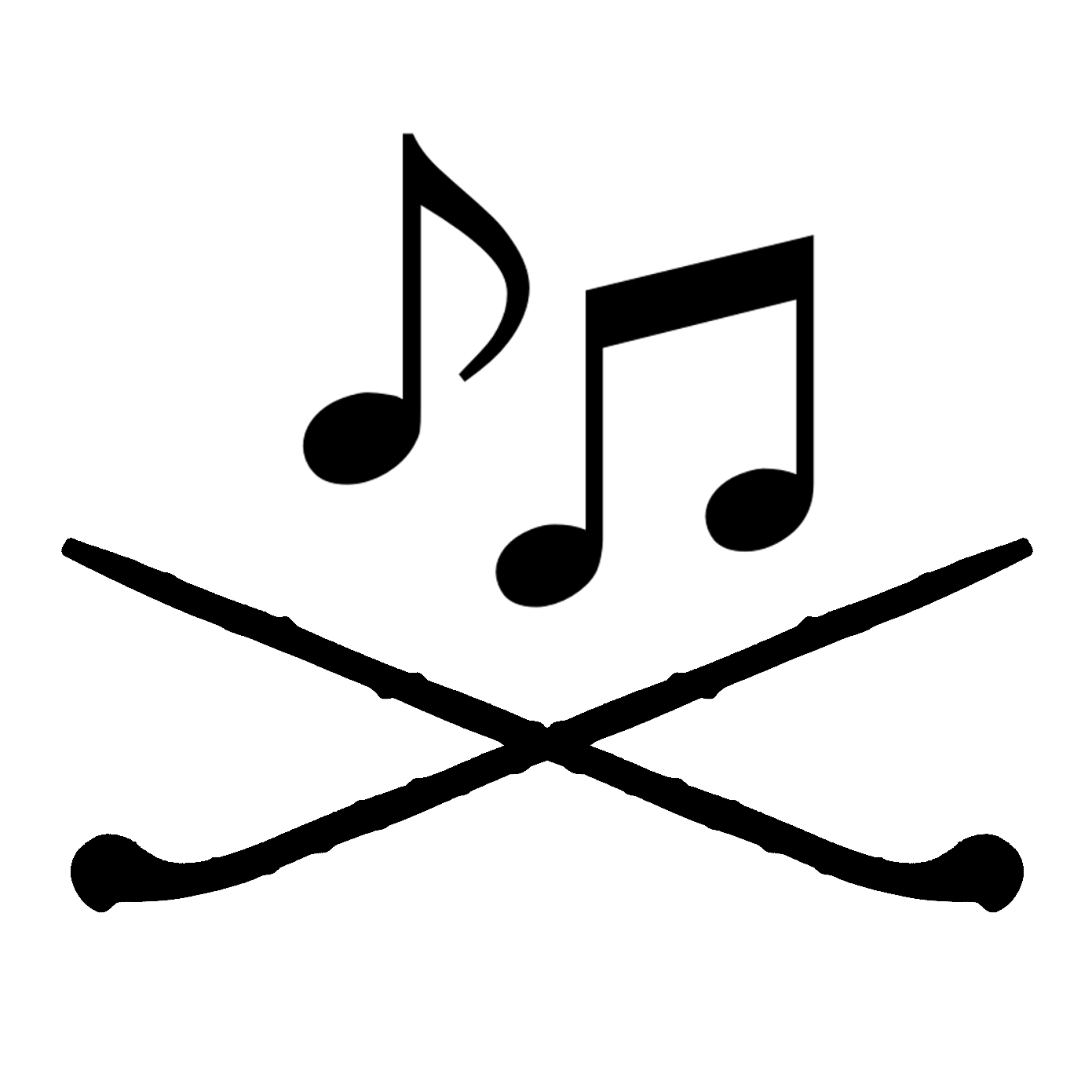An Overview of Irish Stick-fighting and Its Musical Legacy.
A shillelagh is a wooden cudgel, and the word is pronounced “shuh-lay-lee.” More specifically, a shillelagh is an Irish style of stout, knobbed stick that can function as a weapon. In this introductory blog post, I define the word shillelagh is three ways. First, I consider how the noun may have come into English. Then, I discuss the ways it is currently used in reference to the practice of Irish stick-fighting as shillelagh martial arts. Finally, I offer some brief preliminary thoughts on the cultural importance of the shillelagh as a symbol, which I listen for through music.
Definition of Shillelagh
The origin or etymology of the English word shillelagh is a bit convoluted. And just to be thorough, alternate spellings of shillelagh in English include: shelaly, shillaley, shillely, shillaly, shilley, shillela, shilala, shillala, shillalah, shilela, shilelah, shilelagh, shillealah, and shilelagh.
The Oxford English Dictionary (OED) records the first use of shillelagh (spelled Shelela) in 1677 as the name of a village and barony in County Wicklow, Ireland, which was known for its oak forests. According to the Online Etymology Dictionary, the place name comes from the Irish for ‘descendants of Elach’ [Síl nÉladaig or Síol Éalaigh], referring to the sept of an 8th century Irish king in the Province of Leinster. By 1773, Oxford shows that shillelagh was used to refer to a wooden cudgel, seemingly in reference to the famous oaks of the village/barony of Shillelagh.
The English word for an Irish cudgel may also be a corruption of the Gaelic for ‘beam/log/willow with a thong’ [sail éille], which refers to a stout stick equipped with a leather strap that could be secured around the user’s wrist. Or perhaps the etymology is reversed and sail éille is actually an Irish appropriation of the English shillelagh, which was itself an anglicization of the Irish place name? I note that Foras na Gaeilge’s New English-Irish Dictionary lists both sail éille and maide draighin [blackthorn stick] as translations of shillelagh. They don’t give provenance for the former, but at least maide is a more common word for stick (along with bata).
Irish martial arts researcher John Hurley proposes a third interpretation in his book Shillelagh: The Irish Fighting Stick. He speculates that the English word shillelagh may actually come from a shortening of the Irish for ‘thong walking stick’ [bata siúil éille]. While appealing, I await further evidence of this usage before giving it precedence over other etymologies.
Regardless of the word’s origins, shillelagh now refers to the iconic Irish fighting stick. The heyday of cudgel fencing in Ireland was during early the 19th century, when fights between rival factions were a common occurrence and shillelaghs came in various shapes and sizes (see list of examples on John Hurley’s Shillelagh University website). At present, the quintessential shillelagh is a knobbed walking stick of approximately three feet in length and made from the wood of a blackthorn shrub. In Ireland, suitable alternatives include ash, holly, oak, hazel, and hawthorn, based on qualities like their toughness and the availability of relatively straight shanks for stick-making.
Finding a proper shillelagh today is complicated by the tourist industry in Ireland. Shillelaghs used to be seasoned by smearing them with butter and placing them at the hearth or up the chimney, which led to them becoming blackened. Unfortunately, many “shillelaghs” sold to tourists today are merely painted black for the look and are not well-seasoned. Similarly, short clubs with log-like heads are sold as souvenirs, but I have not seen their like in any historical descriptions, paintings, or drawings.
In the images below, you can see the difference between a traditional, knobbed, combat-ready, blackthorn walking stick and a tourist “shillelagh.” I made the blackthorn under the guidance of the Cork branch of the Celtic Stick-makers, whereas the second was given to me as a souvenir by a colleague’s neighbour when she heard that I was interested in shillelaghs. I like both for different reasons, but only the proper blackthorn is really appropriate for Irish stick-fighting as we know it today.





Shillelagh Martial Arts, Then and Now
In Irish, stick-fighting is called bataireacht (link for pronunciation here), and it’s a native form of martial art from Ireland that was until recently on the verge of extinction. I use the term martial art here to mean any system of human combative behaviour, rather than restricting it to the hand combat styles of Asia. My usage draws on discussions in the academic inter-discipline of martial arts studies that are meant to allow broader comparison across cultures.
In 19th-century Ireland, faction fights were often planned months in advance and could involve a great deal of skill. In notable 19th-century Irish author William Carleton’s Traits and Stories of the Irish Peasantry, he describes how stick fencing was a part of many rural boys’ education. The application of these skills came when faction fighters engaged in pitched battles at markets, fairs, patterns, weddings, and funerals. While there were certainly unplanned brawls and unskilled fighters in the faction era, I’m keen to point out that stereotypes about drunk Irishmen randomly beating people with clubs is not entirely accurate. Such stereotypes are also quite derogatory.
Several factors contributed to the decline of Irish stick-fighting in Ireland. Faction fights could range from being a sort of good-natured martial sport to being deadly warfare, but they were always dangerous. The British colonial authorities and Christian religious leaders (Catholic and Protestant alike) were opposed to the violence of faction fighting. After the starvation and mass migration that occurred as a result of the Great Irish Famine (approximately 1845 to 1850), the rural population and way of life was decimated. Finally, the rise of Irish nationalism that eventually led to an independent Republic of Ireland in the 20th century needed factions to stop fighting each other and turn their attention to a united front.
Since the close of the 20th century, there has been a renaissance and re-imagining of faction era stick-fighting skills as a contemporary martial art. In future blog posts, I’ll discuss stylistic developments in this area, but for now I would like to acknowledge the efforts of Glen Doyle in passing on his family’s stick-fighting style and being a leader in the revival. His branch of the Doyle’s came to Canada from Ireland during the faction fighting era. They preserved and polished their skills with the shillelagh in Newfoundland while those practices were gradually abandoned in Ireland. Glen was the first Doyle to teach outside his family, which he began doing at the turn of the 21st century. I’ve had the pleasure of training with Glen, and I can attest to the formidability of his family’s method.
Shillelaghs, Faction Fighting, and Music
What does all this have to do with music? Faction fighting, shillelaghs, blackthorn sticks, etc. feature prominently in the lyrics and titles of a wide range of Irish music: songs, tunes, airs, and ballads, traditional and new, from Ireland and from the diaspora. My Shillelagh Studies project is investigating the significance of this symbolism in order to help revitalize the culture of Irish stick-fighting. In particular, I aim to decolonize negative stereotypes of the shillelagh by helping people to understand the meanings in the music that have atrophied over time.
Below are a few recordings to get things started, but I’ll be digging deeper to uncover older tunes that have fallen out of the repertoire of traditional Irish music. For example, historian Patrick O’Donnell writes in his book Irish Faction Fighters of the Nineteenth Century that, “(up) to the last, each faction party had its party tune” (1975:49). Many of these tunes may have been lost or renamed, but the important connections between music and shillelagh martial arts cannot be ignored.
“It’s the Same Old Shillelagh” composed and recorded by Pat White in 1927:
“The Blackthorn Stick,” a traditional jig played by Shane Farrell on the tenor banjo in 2017:
Another “The Blackthorn Stick,” but this time as a traditional reel, played by a fiddler from County Sligo named Michael Coleman in the early 20th century:
“Assorted shillelaghs” image by used under CC BY-SA 3.0

Thank you for your research! It is very interesting! Please don’t stop and share more information about this part of Irish culture.
LikeLike
Hello Colin. For the record I actually list all three of the etymologies you mention in “Shillelagh: The Irish Fighting Stick” and all of them were found in the larger Irish-English, English-Irish dictionaries published by An Gum. Cheers!
LikeLike
Cheers, John. Thanks for commenting!
LikeLike
Despite what many think, Bataireacht did not die out in Ireland. Its still here, although very rare. The styles used in the United States and Canada are not, and were not, used here which suggests that they are ‘invented’ North American styles. The original style is known in Ireland as An Bata Fada and is very different from what you may be used to. If you are ever over in Ireland I can show you the real medieval Bataireacht.
LikeLike
Thanks for your comments, Proinsias. I’d be very interested to know more about An Bata Fada, especially it’s “medieval” pedigree! I was living in Ireland (Cork City) from 2016 to 2018, so it’s a pity I didn’t hear about this earlier. If you have more information, written material, videos, etc. kindly send them my way!
Please note that I didn’t write that bataireacht died out it Ireland, but rather that it went through a long and severe decline.
As for the North American-based styles you allude two, I’m most familiar with Antrim Bata and Rince an Bhata Uisce Bheatha (Doyle style). The Antrim style, whose headquarters are in Canada, has recent Irish origins, i.e., Maxime Chouinard learned it from a teacher in Ireland within the last 20 years. The Doyle family stick-fighting tradition was brought over to Canada in the mid-1800s. It was invented in Ireland, but one might say it was “incubated” in Canada for the last several generations.
I’ve been following Glen Doyle and Maxime Chouinard for a while, and have found no reason to question the accounts they provide of their styles’ origins in Ireland. From the primary sources I’ve consulted, these styles align with the history of 19th-century faction fighting in Ireland. If you have any hard evidence to contradict their narratives, I’d love to see it.
LikeLike
Hi there, nice to hear from you. An Bata Fada refers to the longer stick that was the true tradition. This was the type used before the period of the faction fighting when they shortened the stick in order to hide its use as a weapon and to pretend that it was a walking aid. An Bata Cath is the old name for a fighting stick also. The Antrim Bata is derived from various forms of faction fighting imagery and you can clearly see from old pictures where they have copied this style. I would say that there is little evidence that this was a true ‘fighting stance’ as it leaves the body open to easy assault as they hold the fighting stick far too high. Someone has simply copied old images which capture a fighter ‘in action’ and then presumed this to be a fighting stance. It only has a use as an initial stance to confuse an opponent. Similar methods are still used in African tribes when they meet with wild animals. The idea is that you make yourself look as tall as possible. This indeed scares off lions, tigers etc, but not so effective against humans. Finally, with all due respect, there is something fishy about people claiming a ‘special style’ and refusing to give their names. Why have they called it the Antrim Style. Have you seen this widespread in Antrim? The other style found in North America is again of no historical significance to Ireland. Who came up with the curious name of Rince an Bhata Uisce Bheatha? It does not and did not occur in Ireland. Again, why has this apparent style only survived among one family and only in Canada? Surely, by simple logic, someone in Ireland would have been familiar or knowledgable on this. Those who partake in this style have clearly used various other forms of European stick/cane fighting and mixed it all together in recent times.
I would just like to say that I am not knocking anyone who is trying to keep Irish culture alive among descendants elsewhere in the world. I applaud such folk. I just want to say that these two ‘types’ or ‘styles’ of Bataireacht are not known in Ireland until very recently when ‘rediscovered’ through Youtube. There are even clubs starting up in Ireland now trying out this pseudo-history. Meanwhile, I will continue to do traditional Irish Bataireacht, the true Irish way. If you are ever in Ireland you can look me up and I will give you a demo. Next month I will be taking part in a Medieval Day in Ballyshannon, Co Donegal, Ireland and will be demonstrating Bataireacht……like I have been doing for thirty years.
LikeLike
Proinsias, I hope you can help my readers and I understand An Bata Fada/Cath a bit better. Who did you learn it from? What is the lineage and history of the style? If it predates the faction fighting era, what was its historical and cultural context?
For those willing to do some research, the name of the man who taught Antrim Bata to Max can be found. The origins are not a secret, but they’re not publicized either. As I understand it, Max’s teacher in Ireland received threats after going public with his family style of bataireacht. Afterwards, he preferred to keep a lower profile, hence why the style is named after an area not a family. Furthermore, historical descriptions—not just images—support the prevalence of the Irish guard used in Antrim. See, for example, Patrick O’Donnell’s The Irish Faction Fighters of the Nineteenth Century (1975).
The nickname of the Doyle style, Rince an Bhata Uisce Bheatha, is a reference to when men of that family used to guard illegal distilleries in Ireland. It survived abroad because a branch of the Doyle family left Ireland and continued practising. They went to Newfoundland, which technically didn’t become part of Canada until after WWII, but that’s beside the point. Part of why the Doyle’s continued practising bataireacht there is because faction fighting actually survived in Newfoundland, which has been documented in a book called Gentlemen-Bishops and Faction Fighters: The Letters of Bishops O Donel, Lambert, Scallan and Other Irish Missionaries (ed. Byrne 1985).
The Antrim and Doyle styles have oral history and family lineages going back to the faction era. I hope you’ll understand that I can’t accept speculation, conjecture, or disbelief as proof that these styles are not what their practitioners believe them to be. Moreover, a lack of knowledge about these styles—or bataireacht in general—in Ireland today is not surprising given the many historical factors that led to the decline of stick-fighting after the faction era peaked before the Great Hunger. That was a long time ago!
Bataireacht barely survived in Ireland and abroad, partly because of negative attitudes and stereotypes. The current revival may have been facilitated by the Internet, but its roots are with a few families who continued to practise stick-fighting long after the faction era. They did so quietly, which is reasonable given the risk of criticism. Doyle and Antrim aren’t the only ones, they’re just the most organized and well-known (yes, I’m in touch with practitioners of other styles that are still under the radar). I hope that my answers helps you to be more accepting and supportive (or at least less critical), Proinsias, because a rising tide raises all boats.
LikeLike
Hello Colin,
I learnt the art from a man named Domhnall Mac Domhnaill in Scotland about thirty years ago. He had a club in Glasgow teaching the old style and as far as I know he learnt it from his grandfather Eoghan Ó Frighil from Donegal. The style I am talking about is the original pre-faction fighters era when a longer stick was used. The shorter stick came into being when the longer stick was banned. The shorter stick could therefore be disguised as a walking stick. I have friends in Co Antrim and there is no knowledge there of an individual being threatened for telling the world about a way of fighting with a stick. This is just plain nonsense…..unless you have some documented evidence other than a secret hush hush comment. Think about it for a moment. What would be the benefit of a whole family threatening one of their own for disclosing an ‘IRISH’ art form? Surely it belongs to every Irish person? Or, is it because it was a style only their family had? If so, can someone explain how only one family had, or were allowed to use/have such a style. It all sounds very strange indeed. Books from the 19th century do indeed mention what you describe as the ‘Irish Guard’…but it was just that….a single move, a starting move…..not a whole fighting style. If one were to fight using this as a whole fighting style, it would be ineffective against anyone who attacked from a lower point. As for the Doyle style, are there any written references/newspaper articles of this family in Ireland guarding illicit whiskey stills? If true, surely this very unusual way of defending a whiskey still should be recorded. What year did they leave Ireland? From where in Ireland?
I refer to your comment….”The Antrim and Doyle styles have oral history and family lineages going back to the faction era. I hope you’ll understand that I can’t accept speculation, conjecture, or disbelief as proof that these styles are not what their practitioners believe them to be.” It seems that you are willing to accept the ‘oral tradition’ of the Brady family and the mystery Armagh man but dismiss others. You have also accused me of ‘speculation, conjecture’ without even listening to what I have to say. This is bad journalism on your part and I find it highly distasteful. You further say that you cannot accept disbelief as proof that these styles are not what their practitioners believe them to be. Again, this is insulting as you do not know my evidence and do not listen to what I have said. I clearly stated that I applaud anyone for try to keep Irish traditions alive and you choose to ignore that. Further, you then say “I hope that my answers help you to be more accepting and supportive (or at least less critical)”. How dare you. I joined in this conversation to help educate but you instantly become defensive. I have not said I was not accepting or supportive of those styles, only that they are later derivatives of the older original form and that they are not known in Ireland (until recent internet times). Am I not allowed my opinion? At no point have I used abusive or foul language or showed any anger, or indeed any examples of being defensive. You are clearly not interested in open constructive debate, or indeed interested in the history of Bataireacht other than what you want to accept.
LikeLike
Thank you, Proinsias, for telling us a bit more about An Bata Fada/Cath. John Hurley has mentioned the historical use of longer weapons for Irish stick-fighting in some of his books, but you’re the first person I’ve heard of who is practising such a type of bataireacht in contemporary times. I hope to learn more about your art and its history in due time.
Although, I’ve never met you and don’t even know your full name, I’m happily taking you at your word about the authenticity and age of your bataireacht. That’s not to say that I’m not thinking critically about the claims of a previously unknown commenter on my blog, but rather that I give people the benefit of the doubt until I know more. And, I’m fully supportive of bataireacht in all its forms.
I’ve trained with Glen Doyle in person and have been practising his family style for about a decade. He’s an excellent teacher, a fine martial artist, and a great guy who’s just trying to pass on what he learned from his dad, who learned from his dad, etc. I’ve come to know Maxime Chouinard more recently through correspondence over the last year or so, and I’m also in the online Antrim lessons put together by one of his students. Max has a Master’s in Museum Studies and works in that area, so his scholarly approach to bataireacht is a welcome addition to the practical skills he learned in Ireland.
Antrim and Doyle are legit in my opinion as a PhD-level researcher trained in ethnography and a martial artist with 35+ years of experience in martial arts both Eastern and Western. I value oral history and living lineage. It’s especially important considering stick-fighters from times gone by tended not to leave written records. Moreover, the travel diaries, newspaper articles, court documents, etc. left by English colonialists and the ascendancy class in Ireland tended to be quite biased towards practices like bataireacht. Those kind of records can only tell us so much, which is part of why my current research project is looking into music and poetry from the oral tradition as a way hearing a different side of bataireacht.
If you’re genuinely interested in knowing more about the Antrim and Doyle styles, there is plenty of information on the Internet, which would be worth reading and listening to before rejecting those traditions outright. Perhaps I’ll have to write a more extensive blog post about them sometime. In the meantime, however, I’ll just say that the answers to your questions about them are available online.
Please do check out the Resources page on my blog and let me know if there are other sources you think I should be adding.
LikeLike